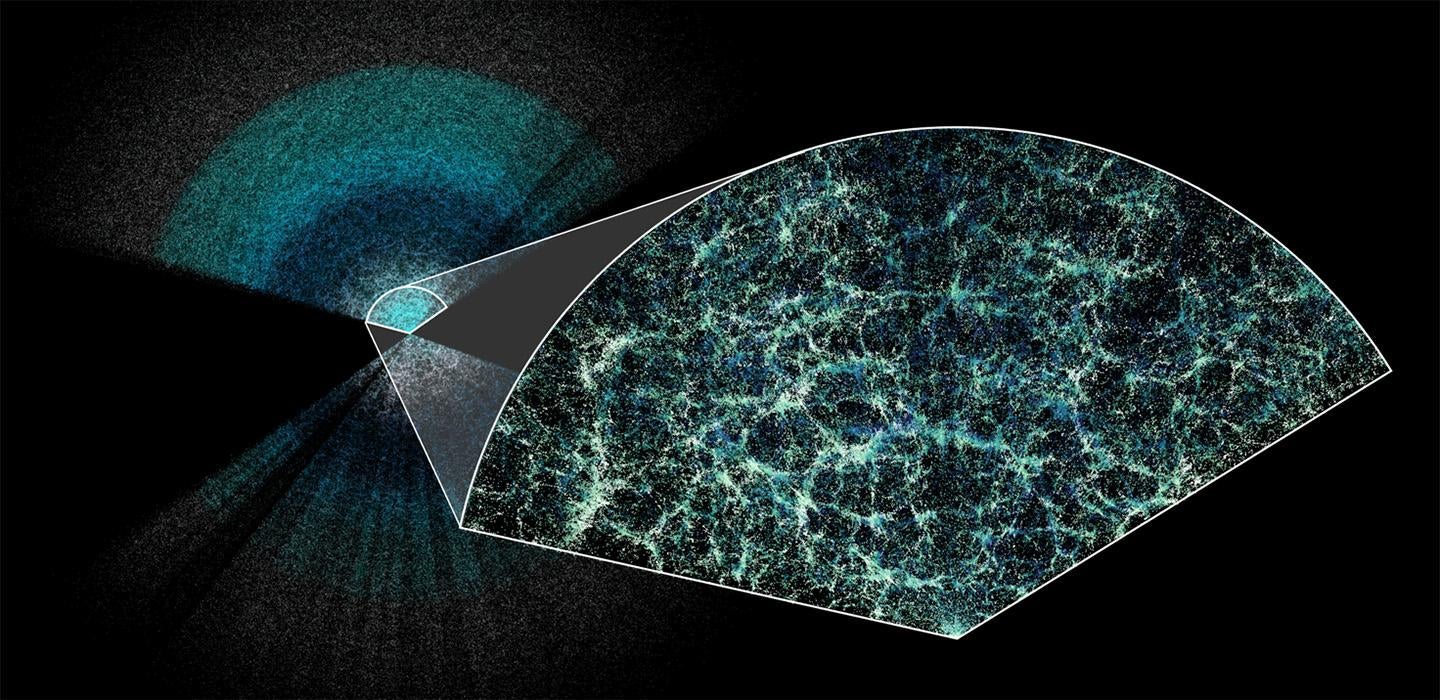
Subscribe to Pittwire Today
Get the most interesting and important stories from the University of Pittsburgh.With 5,000 tiny robots in a mountaintop telescope, researchers can look 11 billion years into the past. The light from far-flung objects in space is just reaching the Dark Energy Spectroscopic Instrument (DESI), enabling us to map our cosmos as it was in its youth and trace its growth to what we see today. Understanding how our universe has evolved is tied to how it ends and to one of the biggest mysteries in physics: dark energy, the unknown ingredient causing our universe to expand faster and faster.
To study dark energy’s effects over the past 11 billion years, DESI has created the largest 3D map of our cosmos ever constructed, with the most precise measurements to date. This is the first time scientists have measured the expansion history of the young universe with a precision better than 1%, giving us our best view yet of how the universe evolved. Researchers shared the analysis of their first year of collected data in multiple papers that will be posted April 4 on the arXiv and in talks at the American Physical Society meeting in the United States and the Rencontres de Moriond in Italy.
“After working with students here at Pitt for more than a decade helping to design the DESI survey, it is extremely exciting to see the beautiful results coming out of just the first year’s worth of data,” said Jeffrey A. Newman, professor of physics and astronomy in the Kenneth P. Dietrich School of Arts and Sciences. Newman was a member of the team that designed the DESI survey.
“We are all looking forward to the precision studies of the universe’s history and contents that the full DESI data will enable,” he said.
“We’re incredibly proud of the data, which have produced world-leading cosmology results and are the first to come out of new generation of dark energy experiments,” said Michael Levi, DESI director and a scientist at the Department of Energy’s Lawrence Berkeley National Laboratory (Berkeley Lab), which manages the project. “So far, we’re seeing basic agreement with our best model of the universe, but we’re also seeing some potentially interesting differences that could indicate that dark energy is evolving with time. Those may or may not go away with more data, so we’re excited to start analyzing our three-year dataset soon.”
Read the full release on the Berkeley Lab website.
Graphic by Claire Lamman/DESI collaboration; custom colormap package by cmastro. Earth is at the center of this thin slice of the full map. In the magnified section, it is easy to see the underlying structure of matter in our universe.


